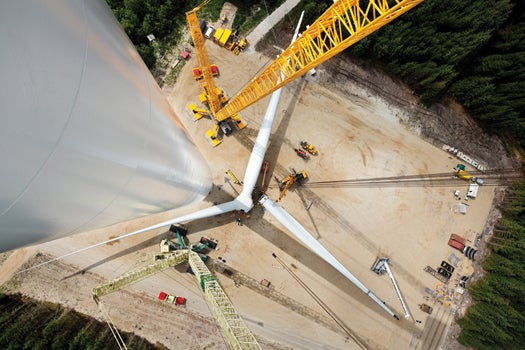Megapixels: A Wind Turbine That Can Power 6,000 Households
The world's largest wind turbine has rotator blades the size of an Airbus.


Bigger, Better Blades
Last fall in Østerild, Denmark, the German company Siemens built the world’s largest wind turbine. Each of its three rotor blades measures 246 feet—nearly the wingspan of an Airbus A380. While most turbine manufacturers make blades in two separate pieces, from molds, Siemens casts them in one piece. Because the process eliminates the need for glue, the balsa-based blades are up to 20 percent lighter than traditional ones. The reduced weight helped make it possible to build longer blades, which capture more wind and therefore generate more power. The turbine produces up to six megawatts of electricity, enough to service 6,000 households, and Siemens will install 300 in the U.K. beginning this year.